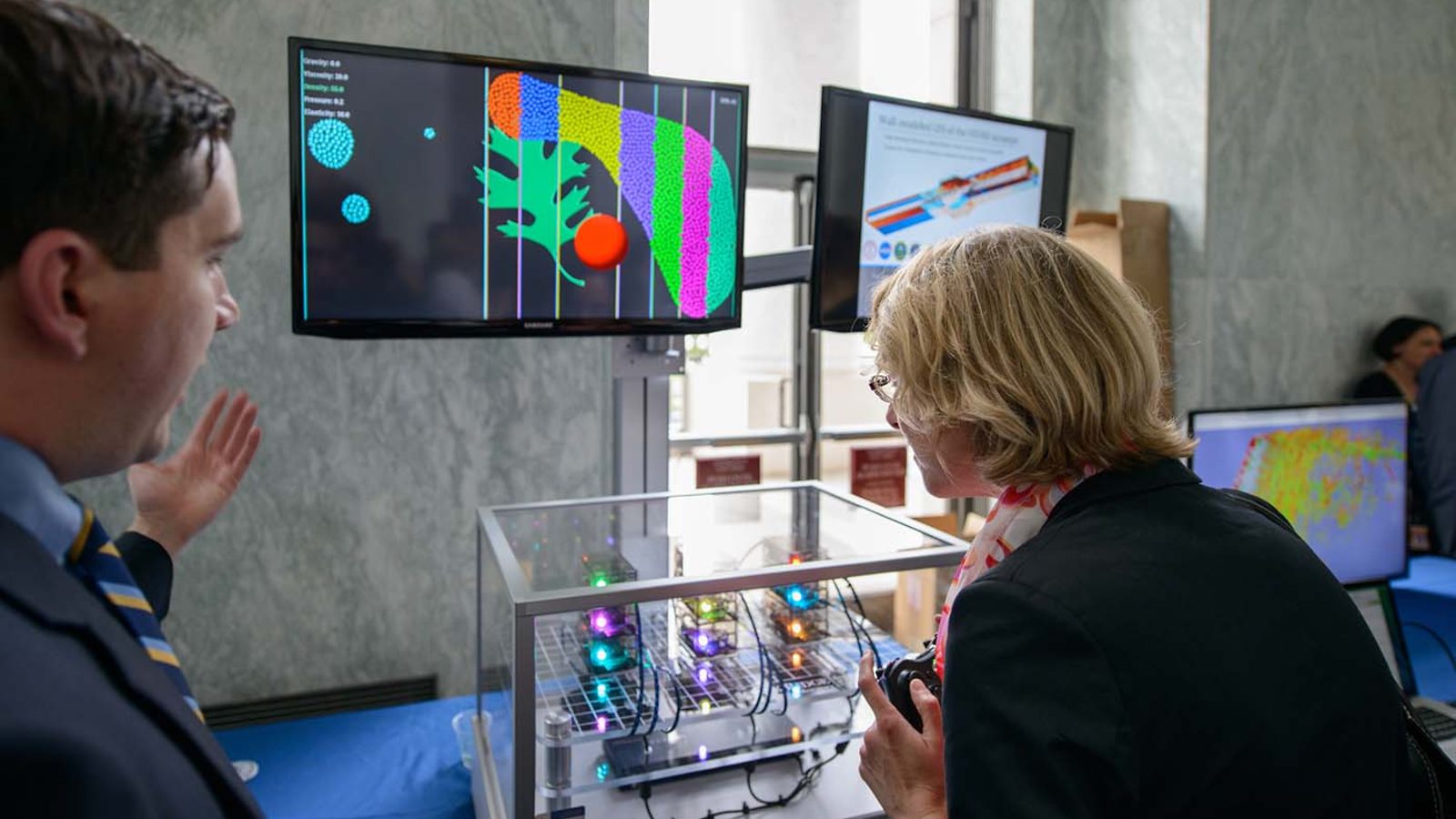Tiny Titan is a supercomputer. Kind of.
It should probably be clarified that the term supercomputer, in this sense, would have more to do with how the machine works than its size.
A miniature mock-up of Titan—the behemoth supercomputer spanning 4352 square feet at Oak Ridge National Laboratory—Tiny Titan barely fills two square feet. And while Titan uses tens of thousands of CPUs and GPUs to perform advanced mathematics at 27 quadrillion calculations per second, Tiny Titan uses nine single-core processors to draw colorful little waves on a monitor.
“Tiny Titan communicates in the same way that a normal supercomputer does,” says Robert French, a user support specialist at Oak Ridge that helped design the micro machine over the past year.
Using an interactive fluid simulation developed by Adam Simpson, also from Oak Ridge, Tiny Titan’s processors work in tandem to animate waves of colored particles. As individual particles flow across the monitor, they pass from one processor to another, changing color on screen to match an LED on one of Tiny Titan’s corresponding cores. Turning off one or more of the cores, as its program allows, puts a greater burden on the remaining cores and causes the program to lag.
The demo offers a dollhouse-scale illustration of the way supercomputers rely on hundreds or thousands of smaller, synchronized computers to run simulations of tremendously detailed events—such as supernovae, climate change, nuclear fusion or molecular interactions. Creatively coded software breaks up large problems into lots of little ones. The code delegates the smaller pieces to separate processors and then finally brings everything back together in the right order.
These concepts are hard to teach, French says, if your primary example is a supercomputer like Titan, which “looks like 200 giant refrigerators sitting next to each other.”
The mission of the Tiny Titan project is to introduce parallel computing into more schools’ curricula. Basic computer science classes teach serial processing: how a single processor works one task at a time. But many of these classes shy away from parallel computing.
A functional model that students can watch and tinker with may be a good starting point for some classrooms, Simpson says.
Members of the Oak Ridge team aren’t the only ones to come to this conclusion. A group at the University of California, San Diego—future home of the planned Comet supercomputer—assembled a similar computer cluster in 2013 called Meteor. The machine teaches the basics of parallel computing through games.
For its part, Tiny Titan is flashy, sleekly bundled to fit on a desktop, and comes with an Xbox controller to boot.
For that, thank team member Anthony DiGirolamo. Tiny Titan’s first incarnation was an unflattering mess of wires on a plastic cart. “But as we refined it,” DiGirolamo says, “we were able to explain what’s going on inside Titan by developing a transparent display case.”
The Oak Ridge team has posted on their GitHub page an exact supply list and an uncomplicated tutorial on how to build a Tiny Titan. They hope it will be part of a revolution in how we teach young students about computers.
And that’s something Tiny Titan can feel big about.








